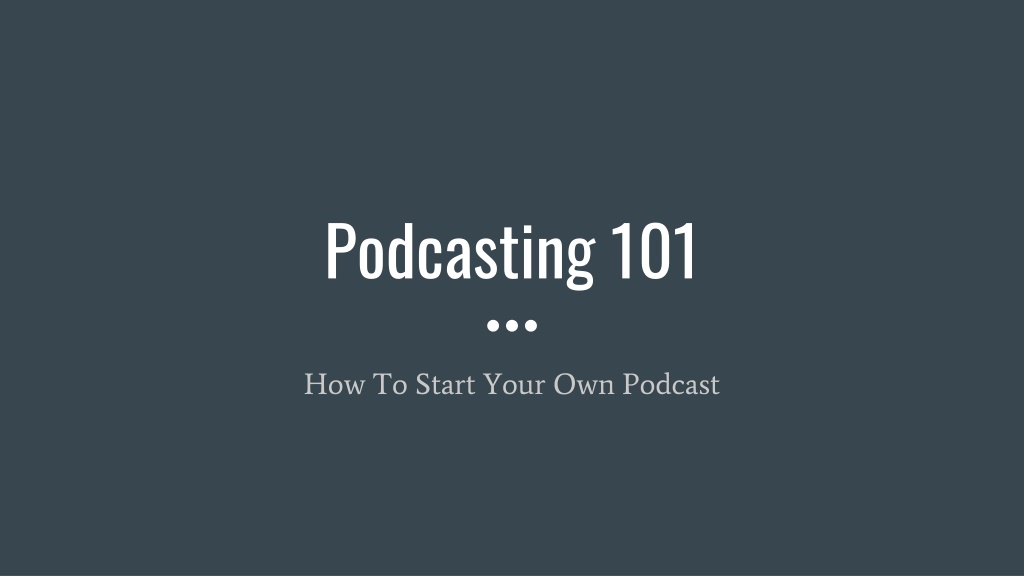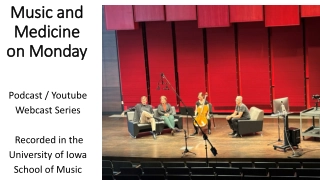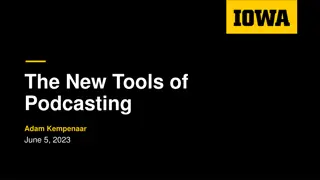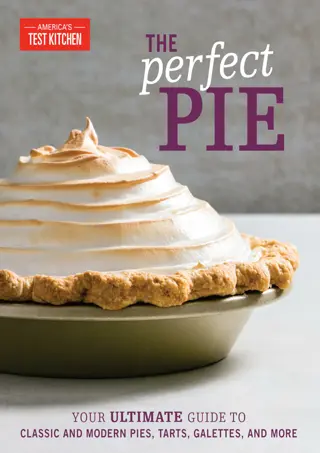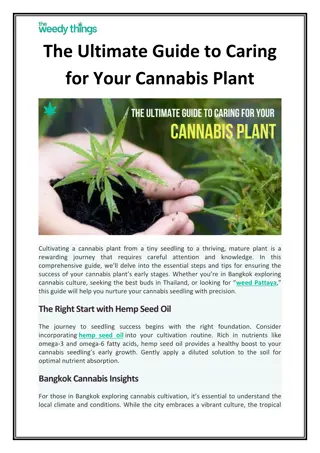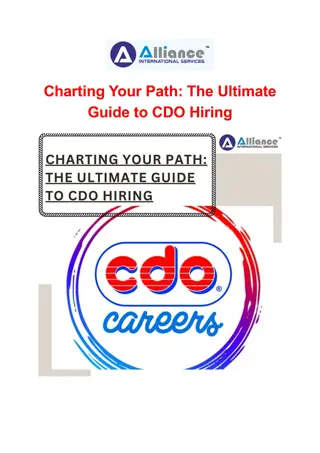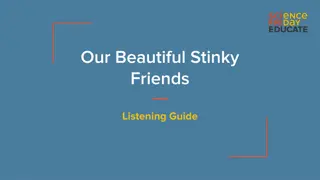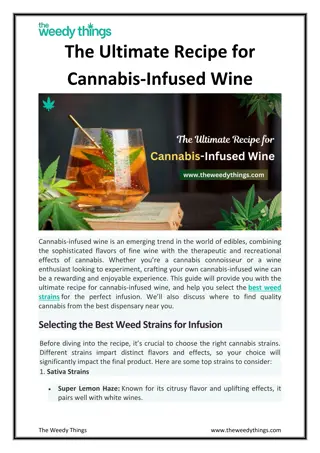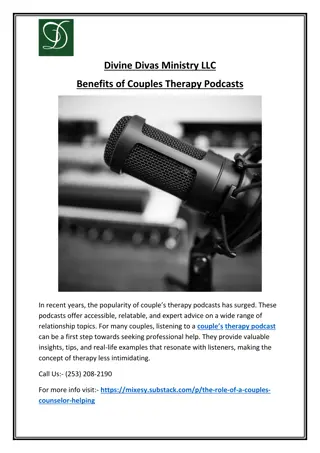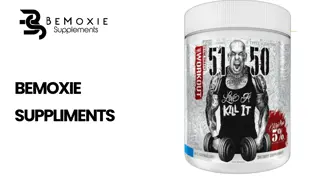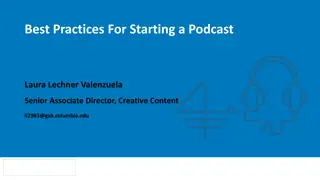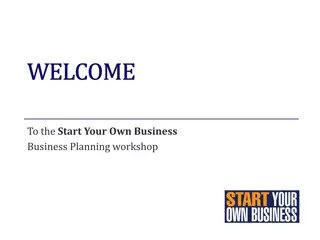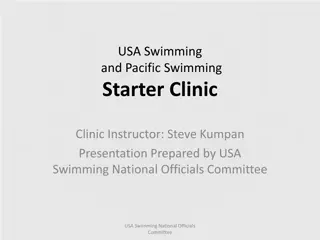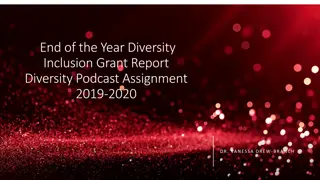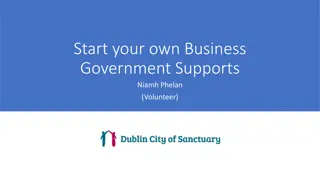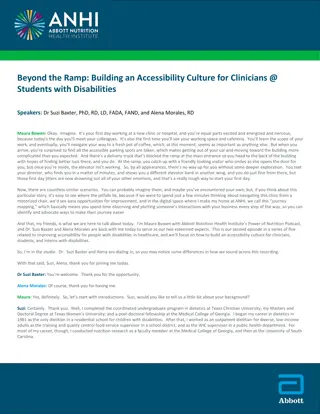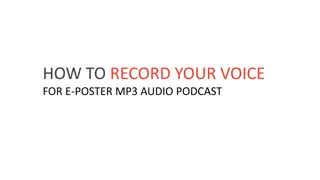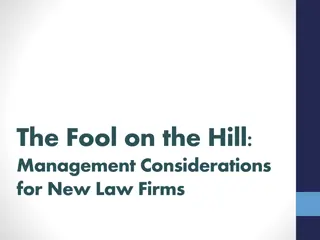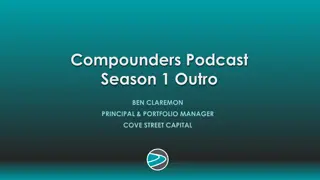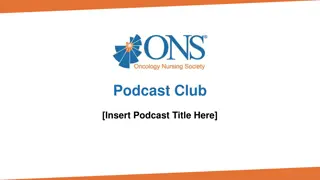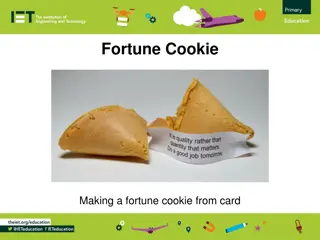Ultimate Guide to Starting Your Own Podcast
Entering the world of podcasting? Learn the essentials - defining your audience, setting goals, naming your podcast, planning episodes, deciding episode length and release frequency, and choosing your format. Discover tips for success and get inspired to kickstart your podcasting journey today!
Download Presentation

Please find below an Image/Link to download the presentation.
The content on the website is provided AS IS for your information and personal use only. It may not be sold, licensed, or shared on other websites without obtaining consent from the author.If you encounter any issues during the download, it is possible that the publisher has removed the file from their server.
You are allowed to download the files provided on this website for personal or commercial use, subject to the condition that they are used lawfully. All files are the property of their respective owners.
The content on the website is provided AS IS for your information and personal use only. It may not be sold, licensed, or shared on other websites without obtaining consent from the author.
E N D
Presentation Transcript
Podcasting 101 How To Start Your Own Podcast
What is a podcast? At its simplest, a podcast is a series of episodic digital audio files.
Step One: Get An Idea Who is your audience? Create a sample persona. Why should they listen to you? Where are they? Do you already have an audience? Use them.
Step Two: Figure Out Your Goal For Podcasting Is this a hobby? For a brand? Is the goal to make money? Manage expectations. Your podcast will very likely not make any money. Set realistic goals. Determine what success looks like for you.
Step Three: Name Your Podcast Your dream name is probably taken. Make it descriptive, and preferably clever. Don t use your name, unless you are already an established figure. Work on your elevator pitch. Two sentences at most. Hone your description. Do it again. Get feedback. Keep honing. You will need some sort of logo to use as cover art for your episodes.
Step Four: Plan Your Episodes How long are your episodes going to be? Under 20: considered short. 20-45: considered average (based on an average commute of 20 minutes). 45+ considered long More people are put off by short episodes than actively want short episodes, but overall most people don t care about length, to a point. What s most important is that you provide valuable content, not the length. Usually, don t cut good content for the sake of brevity. What are other podcasters doing in this space? If there are a number in the space, do you want to stick with the trend, or try to provide a length not currently in the space. You are not Joe Rogan.
Step Four: Plan Your Episodes (cont) How often will you release? Once a month is about as slow as you can go. Twice a month is better, weekly is even more so. People plan their lives out weekly most times. A weekly podcast is more likely to get planned for. Consistency trumps all. Better to put out one killer episode a month, than rush out a bunch of shoddy once a week episodes. Seasons are also an option. More typical in audio drama style podcasts, or in limited run documentary style. Typically themed.
Step Four: Plan Your Episodes (cont) What is your format? How many co-hosts? Solo vs co-hosted vs interview. Solo: easiest to maintain consistency, as no one to hold you up. Co-hosted: easier to maintain interest, less mic fright Interview: built in cross promotion Are you going to script? Good solo podcasts, and audio dramas, are usually scripted.
Step Five: Record An Episode - Hardware At minimum you need two things: a microphone, and a device with internet access that can record. You can, technically, use your phone. Don t do this. Unless you are flat broke, it is typically not advised to go as cheap as possible. People will be able to tell the difference. If you go cheap now, and decide later to upgrade, you may as well have just spent the money initially, you ll have come out ahead. There are devices that can be used to record with built in microphones, like portable recorders. You will still need to have access to a computer with internet access however. There are a wide array of easy to use USB microphones, that are affordable, decent, and are plug and play. The more hosts you have, the more microphones you will need. More than two hosts, and you will likely need an interface. Most computers won t allow/recognize multiple usb microphones at a time. And if your microphones are not USB, you will need an interface. Basically an interface is a box where you plug in multiple microphones, and it plugs into your computer.
Step Five: Record An Episode - Software If you are recording in person, you will need some sort of software like Garageband, Pro Tools, or Audacity. Audacity is free. If you are recording over something like zoom, it will often have built in recording capability. Be wary about recording over the internet, there are a host of issues there, ranging from quality to losing internet midstream. Whatever software you use, that is where you will do your editing, such as: Adjust volume levels Cut/splice Add intro/outro
Step Five: Record An Episode - Sundries Intro/outro Music All good podcasts have them. There are all manner of directories of free music that you can use. No, you can t use that song you heard on the radio. The intro is where you give the briefest of introductions, like introducing the hosts, and your elevator pitch. The outro is where you can put your plea for folks to leave a review, your patreon, etc. Learn how to talk into a microphone. Get a pop filter for your microphone.
Step Six: Choose A Host Your host is used to host the actual files, and turn them into an RSS feed. YouTube: Free, and video based for those who record video. You do not have to record to video however, you can just use a filler image, usually your podcast logo. Is not an RSS feed however. Anchor: Popular app, has built in recording software. Free. Pinecast: Free for ten episodes. 10/month, and unlimited number of episodes and shows. Libsyn: One of the biggest and oldest. Great analytics, support, etc. Can be pricey, charges based on amount uploaded. Base plan has no real stats. Lots of others: Buzzsprout, Captivate, Transistor, Castos, Rss.com, Podbean, Simplecast, etc
Step Seven: Release It Release it through your host. Share that it s out, everywhere.
Step Eight: Submit It There are a number of places that will air your podcast. These are known as podcatchers. They take the RSS feed generated by your host, and use it for their listeners to use to listen to you. There are a ton of them. Apple Podcasts, Spotify, Google Podcasts, Podcast Addict, are some of the bigger ones, but you want to be on as many as you can. Spotify is the biggest currently, they claim. Apple Podcasts is likely number 2.
Step Nine: Promote It You need social media. Ideally social media where your target market is hanging out. You will probably need a website if you are going to take this seriously. You need an email list. Make trailers of 15 sec, 30 sec, and 1 minute in length. See if you can swap them with related podcasts.
Step Nine: Monetize It You probably won t make any money doing this. Don t get excited. If you do, it will be from either selling ad space, or having a patreon. Statistically less than 3% of your regular listeners will ever consider backing your patreon if you have one. Some hosts will help you sell ad space. You typically will have to average several thousand downloads an episode.
Step Ten: Best Practices Be Consistent. Build A Buffer. Join subreddits about podcasting. Listen to podcasts about starting podcast. The Feed from Libsyn has some interesting stuff.
Thanks! Visit hilltophowlers.org/free-downloads to download a printable copy of this powerpoint.
